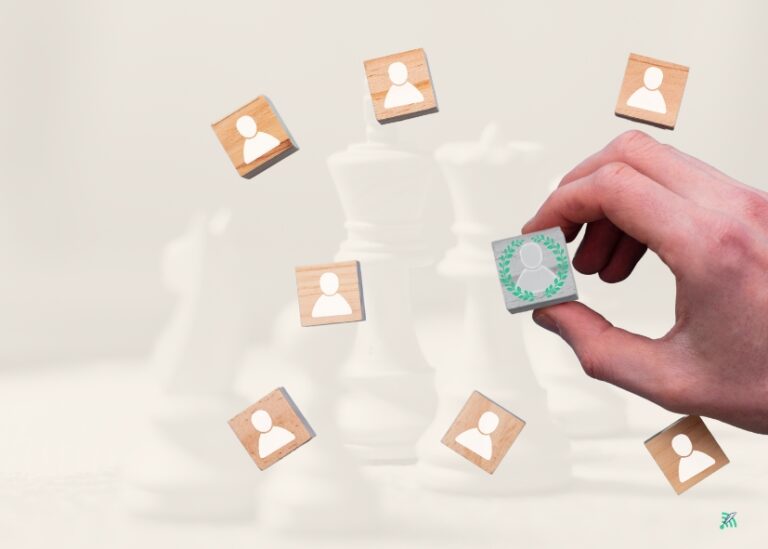When thinking of B2B marketing, most people conjure an image of rational, fact-based materials, crafted in a clear cut, professional tone. And they wouldn’t be wrong for having this presumption; it’s long been the norm. But recent evidence suggests [1, 2, 3] that this formal, business-like approach may not be the most effective strategy.
In order to drive tangible results with your marketing efforts, it is imperative that you build emotional connections with your audience, even if you are working in a B2B setting. Simply adopting traditional methods is no longer enough. Modern marketers need to create an experience around their brand and product. And their ability to do so depends on their ability to trigger the right emotions, in the right audience, at the right time.
Not convinced and rather sceptic? Join us as we explore the reasons for emotional B2B marketing in part 1 – this part -, and how it can be a useful tool in the world of healthcare in part 2 – following.
Why emotions work in B2B settings
Businesses are just a collection of humans
Even if your brand, product or service is technically categorized as B2B, you are not trying to reach a completely faceless organization. Au contraire, decision makers within a business are, invariably, human.
None of us become cyborgs the second we walk through our office doors or open our computers for the day. We behave and act like humans, whether at home or at work, and are all subject to a decision-making process that is based on emotions.
Emotions affect our decision-making process
Numerous studies [Ref 4, 5] have shown the power of emotions on decision-making from a marketing and non-marketing perspective.
Biologically speaking, emotions are a result of external stimuli that trigger the production of hormones in our bodies. This hormone production is an ongoing, constant cycle and important for our species survival. Fear produces adrenaline that instigates our fight or flight response in dangerous situations. Love releases dopamine, encouraging us to spend more time with the object of our affections.
Although theory suggests that there are 8 basic emotions, there is a plethora of other, more nuanced feelings that humans experience on a daily basis. This is depicted by Plutchik’s Wheel of Emotions. With such a vast range of emotion constantly waging war in our brains, it’s not surprising that humans don’t have much control over how we feel when responding to those external stimuli.
Decision-making does, of course, have a more conscious component to it. Our brains have an analytical, rule-governed part which helps us to make sense of information, justify our decisions and circumvent any issues in our path. However, research suggests that this component is much less influential than our emotional input. Decisions based on emotions happen subconsciously, intuitively and very quickly without much rational thinking. Whether we like it or not, as humans we simply cannot disconnect our decision-making process from our emotions.
B2B decision making could be even more emotional than B2C
Contrary to what you may think, B2B decision makers may be allowing their emotions to inform their decision-making at an even greater level than consumers. The reason behind this, is that a B2B decision usually has higher stakes.
Why? The purchasing cycle for businesses looking to enter into a partnership with another business is much longer. We aren’t talking about a consumer clicking on an ad for product, or walking past a shop window and deciding to make a purchase.
Prospective B2B clients are usually looking for a long-term partnership that suits the needs, budgets and culture of their organization before taking the plunge. They may be conducting high levels of research, completing risk analysis and producing a roadmap for their future plans. Because of this, B2B prospects need to be completely convinced about your brand, products or services in order to commit and enter a client relationship.
Additionally, in a B2B setting there are usually more decision makers involved. It’s highly unlikely that a B2B purchase happens as a result of one person’s decision. There may have been extensive research carried out, multiple reports created and meetings conducted before a prospective client actually reaches out to a business provider like your organization. And there may be more to come after a pitch is made, or marketing materials are provided.
It is important to have emotionally invested people in a target business helping to convince others within their organization that entering an agreement with your business is the right move.
Finally, there’s more at risk for B2B buyers. Many employees are more concerned about making a mistake at work than they are in their personal life. All want to look good in front of their superiors, and equally want to earn the trust and respect of their co-workers. Prospective clients need to feel completely secure when entering into a partnership with a company and know that they won’t be made a fool out of, or cost the company money with a bad deal. These fears can be assuaged by trying to trigger an emotion that is connected to safety, security and integrity.
If nothing else, it’s going to make you stand out
Take a look around at other companies conducting B2B marketing. The chances are that you will see mostly business-like, factual messaging. And if you do see any kind of emotional storytelling, it’s likely that it has been produced by best-in-class companies that are excelling in their field. By adopting an emotional angle in your own marketing efforts, you are simultaneously putting yourself a head and shoulders above those not choosing this strategy, and positioning yourself with those best-in-class brands to stake your claim as an industry expert.
Now that you know why you should be adapting your strategy, where do you begin?
Let’s look more closely at how to utilize emotion to craft powerful and effective B2B marketing messages in part 2 following.




